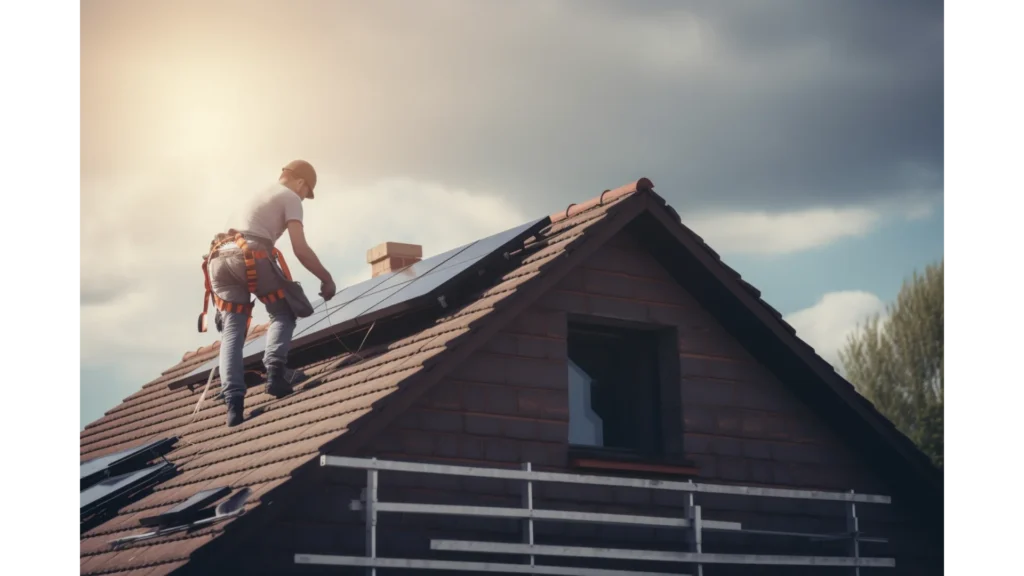
As homeowners and businesses strive to reduce their carbon footprint, installing solar panels has become increasingly popular. However, before making the switch to solar energy, it is important to consider the state of your roof.
The condition of your roof can impact the efficiency and safety of a solar panel installation, which raises the question: will I need to get a new roof before installing solar panels?
Several factors come into play when considering if a new roof is necessary for a successful solar panel installation. These include inspecting your roof for damage, addressing any issues beforehand, working with licensed roofing contractors, and ensuring a secure and safe installation process.
By understanding these considerations and taking appropriate action beforehand, you can ensure that your investment in renewable energy is not compromised by underlying roofing problems.
Before installing solar panels, it is imperative to consider various factors that may impact the overall feasibility and effectiveness of the project.
One important factor to consider is the condition of your roof. Solar panels are typically installed on rooftops, which means that any issues with your roof can affect the installation process and potentially compromise your solar system’s performance. Therefore, assessing whether or not you need a new roof before installing solar panels is essential.
The age and condition of your roof are crucial factors in determining whether or not you need a new one before installing solar panels. If your roof is more than 15 years old or has significant damage, such as leaks, cracks, or missing shingles, it may be necessary to replace it before installing solar panels.
A damaged or aging roof can cause problems during installation and reduce the lifespan of your solar system.
Another factor to consider when assessing whether you need a new roof before installing solar panels is its structural integrity. Solar panel systems add weight to your rooftop, so if your current roofing structure cannot support this additional weight, it may be necessary to reinforce or replace it entirely.
This will ensure that your home remains safe and secure while also maximizing the efficiency and longevity of your solar panel system.
Examining the condition of your roof is an important step in determining whether it can support the weight and structure of solar panels.
Before installing any solar panel system, you should inspect your roof for damages such as cracks, leaks, or missing shingles. A damaged roof that has not been repaired can lead to water damage, which could impact the effectiveness of your solar panel system.
To best evaluate your roof’s condition, you may want to hire a professional roofing contractor. The contractor will assess the overall health of your roof and provide recommendations on whether any repairs need to be made before installing solar panels.
If there are existing problems with your roof, it may be necessary to address them before installation begins.
If your roof is relatively new and free from damage, it may still require reinforcement or modifications to accommodate a solar panel system.
For instance, if you have a flat or low-sloped roof, additional structural support may be required to ensure that it can safely carry the weight of solar panels.
Ultimately, ensuring that your roof is in good condition before installing solar panels is essential for maximizing energy efficiency and preventing potential safety hazards down the line.
Ensuring that any existing roof issues are addressed before solar panel installation is essential for maximizing energy efficiency and preventing potential safety hazards down the line.
Before installing solar panels, it is important to thoroughly inspect your roof for any signs of damage or wear and tear. This can include missing shingles, cracks in the roofing material, or any other types of damage that could compromise the integrity of your roof.
If you identify any issues with your roof during the inspection process, addressing these problems before moving forward with solar panel installation is important. Some common solutions may include repairing or replacing damaged shingles, fixing leaks or water damage, reinforcing weak spots on the roof structure, or even completely replacing an old or worn-out roof.
By addressing these issues beforehand, you can ensure that your home’s new solar panel system will be installed on a solid and stable foundation. This will help maximize energy efficiency and savings over time and prevent potential safety hazards down the line.
Taking proactive steps to address existing roof issues can provide peace of mind knowing that your home is well-protected against environmental factors such as high winds, heavy rains, and extreme temperatures.
In summary, addressing any pre-existing roofing issues before installing a new solar panel system is crucial. By doing so, homeowners can ensure maximum energy efficiency and prevent potential safety hazards down the line. Taking proactive steps towards repairing or replacing old/weak roofs offers peace of mind knowing that their homes are well-equipped to handle environmental factors while also maximizing long-term savings on energy bills!
Partnering with a licensed roofing contractor is essential in the solar panel installation process to ensure compliance with local building codes and regulations.
A licensed roofing contractor can inspect your roof for any issues and make necessary repairs before installing solar panels, ensuring that your roof can support the added weight of the panels.
In addition, working with a licensed professional ensures that your installation complies with state and local laws, reducing the risk of fines or legal issues down the line.
A licensed roofing contractor can also offer valuable advice on choosing the right type of solar panel for your specific roof.
For example, they may recommend a more durable solar panel system that is better suited to withstand harsh weather conditions if you live in an area prone to storms or high winds.
They can also provide guidance on proper maintenance to prolong the life of both your roof and solar panels.
Overall, partnering with a licensed roofing contractor helps ensure that your investment in solar energy is efficient and safe.
By addressing any potential issues beforehand and following all necessary regulations during installation, you’ll have peace of mind knowing that you’re making a smart decision for both your wallet and the environment.
The safety and security of your home and solar panel system can be ensured by taking necessary precautions during installation, including careful placement and reinforcement of panels to prevent damage or accidents.
Firstly, it is important to ensure that the weight of the solar panels is evenly distributed across your roof to prevent any unnecessary stress on specific areas. This can be achieved by using proper racking systems designed specifically for your roofing material.
Secondly, a qualified installer will take steps to secure the panels to your roof properly. One common method involves drilling into your roof’s rafters or trusses to create sturdy anchor points for each panel. However, this must be done with precision and care as it could result in damage if not done correctly. Alternatively, non-penetrating options such as ballasted racking systems do not require any holes to be drilled into your roof.
Lastly, regular maintenance checks should be performed on both your roof and solar panel system to ensure everything remains secure over time. This includes inspections for any signs of wear or tear on both the roofing material and mounting hardware used for the solar panels.
Proper upkeep will help guarantee a safe and reliable solar energy system for years to come.
By following these guidelines, you can have peace of mind knowing that installing a solar panel system does not compromise the safety or integrity of your home’s structure. With proper precautions during installation and ongoing maintenance checks, you can enjoy all the benefits of clean, renewable energy without worrying about any unwanted risks or damages caused by a poorly installed system.
In conclusion, before installing solar panels, it is important to assess the condition of your roof. A damaged or aging roof can compromise the effectiveness and safety of a solar panel installation. Therefore, inspecting the roof for damage, addressing any issues beforehand, and working with a licensed roofing contractor are critical steps to ensure that your solar panels will function optimally and safely.
It is also important to consider various factors such as climate, location, and shading when deciding on the type of solar panels to install.
By taking these precautions and making informed decisions throughout the installation process, homeowners can enjoy the benefits of renewable energy while protecting their roofs and ensuring long-term savings.
The lifespan of a roof can vary depending on a number of factors, including the type of material used, the quality of installation, and the climate in which it is located.
On average, however, most roofs are expected to last between 15 and 25 years.
Some materials, such as metal or clay tiles, may have longer lifespans of up to 50 years or more.
Regular maintenance and repairs can help extend the life of a roof and prevent premature replacement.
Ultimately, determining whether or not a new roof is necessary before installing solar panels will depend on the age and condition of the existing roof.
The weight that a roof can typically support is dependent on various factors, such as the type of roof, its age, and the materials used in constructing it.
For instance, due to its design, a flat roof can bear more weight than an angled one.
Similarly, a newer and well-maintained roof has greater structural integrity than an old one that is deteriorating.
Additionally, different roofing materials have varying load-bearing capacities, with metal roofs being able to sustain heavier loads compared to asphalt shingle roofs.
In conclusion, determining whether or not a new roof is needed before installing solar panels requires evaluating the specific characteristics of the existing roof in question.
The installation of solar panels on different types of roofs has been widely researched and tested. The type of roof material, its age, condition, and weight-bearing capacity are all factors to consider when determining if a roof is suitable for solar panel installation.
Asphalt shingle roofs are commonly used for residential properties and can support the weight of solar panels without needing reinforcements or repairs. Depending on their condition and structural integrity, other roofing materials, such as metal or tile, may also be suitable for solar panel installation.
It is recommended to have a professional inspection conducted before installing solar panels to ensure that the roof can safely support the added weight and provide maximum efficiency for energy savings.
The government offers various incentives to encourage the installation of solar panels, including tax credits, rebates, and grants. These incentives aim to promote renewable energy use and reduce dependence on non-renewable sources.
The Federal Solar Tax Credit allows homeowners to deduct a percentage of their solar panel installation costs from their federal taxes. Additionally, some states offer their own tax credits or rebates for installing solar panels.
Grants may also be available through state or local programs to help offset the initial cost of installation. These incentives can make it more financially feasible for homeowners to invest in solar panel technology and contribute to a cleaner energy future.
The cost of removing and reinstalling solar panels in the case of roof replacement varies depending on the size and complexity of the system.
In general, the process involves disconnecting the electrical connections, removing the mounting hardware, lifting off the panels, replacing or repairing the underlying roof structure, and then reattaching everything.
According to estimates from solar contractors, this process can add between $1,000 to $3,000 to a roof replacement project.
However, investing in high-quality roofing materials that last longer can reduce the frequency of roof replacements and, thus, lower long-term costs associated with solar panel removal and reinstallation.
Ultimately, weighing both short-term and long-term costs is crucial in making informed decisions about installing solar panels on a new or existing roof.

How Long To Install A Residential Solar Panel System? Share: Facebook Twitter LinkedIn Pinterest Installing a residential solar panel system is a significant investment that
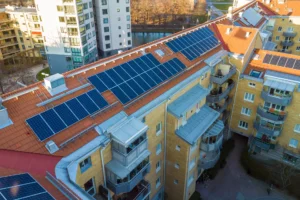
Can I Install Solar Panels On A Rental Property? Share: Facebook Twitter LinkedIn Pinterest As more individuals and businesses seek to reduce their carbon footprint,
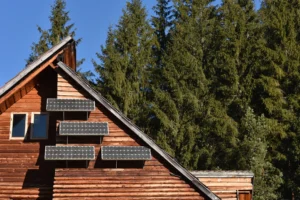
What Is The Difference Between On-Grid And Off-Grid Solar Systems? Share: Facebook Twitter LinkedIn Pinterest Solar power is becoming increasingly popular for individuals and businesses
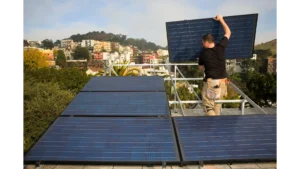
Best Mounting Options for Solar Panels: A Comprehensive Guide Share: Facebook Twitter LinkedIn Pinterest Solar energy is a renewable and sustainable source of power that
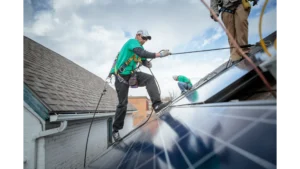
How To Find A Good Solar Panel Installer? Share: Facebook Twitter LinkedIn Pinterest Good Solar Panel Installer Solar panels have become popular for homeowners looking
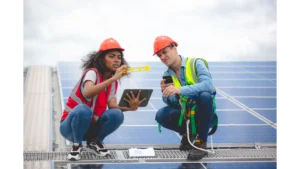
How Much Space Do I Need On My Roof To Install Solar Panels? Share: Facebook Twitter LinkedIn Pinterest Do I have enough Space on My